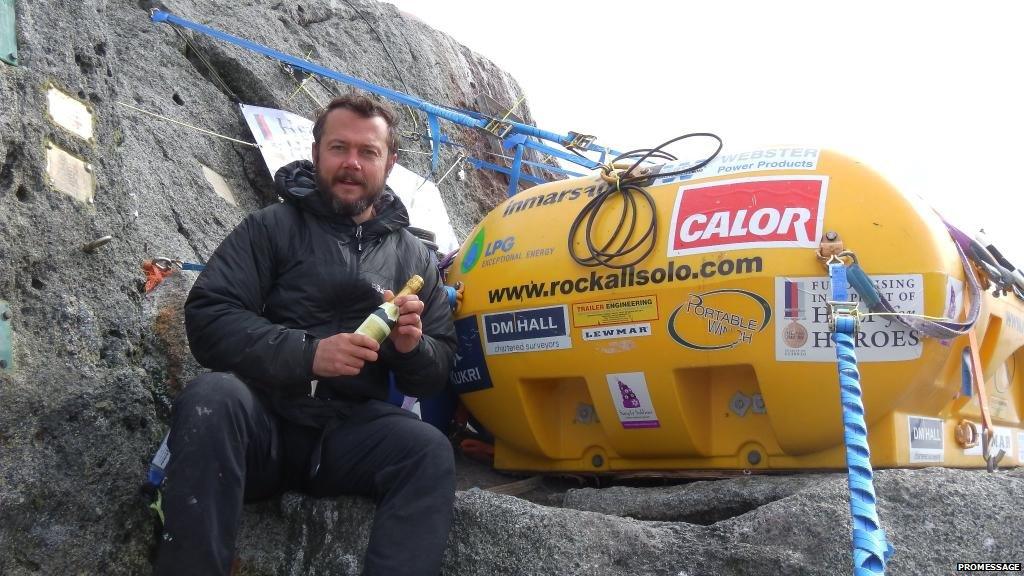UK government spy base fears over remote Rockall
- Published
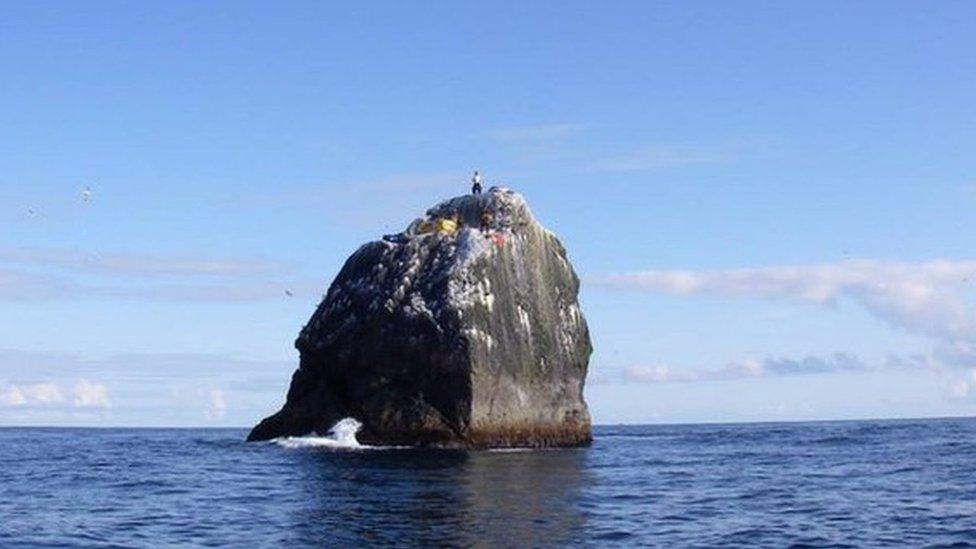
Declassified documents reveal concerns of the UK government 60 years ago that Rockall could become a base for spying on a missile test site.
The rock is an eroded volcano that lies 260 miles (418km) west of the Western Isles and is only 30m (100ft) wide and 21m (70ft) high above the sea.
The Nato documents report how the UK claimed Rockall in 1955.
The government feared that it could be used by "hostile agents" as a place to monitor the Hebrides Rocket Range.
A small team of military personnel was taken to Rockall by the Royal Navy in September 1955 to claim as UK territory.
A union jack was raised and a plaque installed on the rock.
'Hostile agents'
In the documents, it says: "This decision of the UK government was connected with the fact that the UK government had recently decided to set up a guided missile range in South Uist, in the Outer Hebrides.
"The island of Rockall was uninhabited but this government wished to guard against the possibility of hostile agents installing themselves on the island in order to observe the effects of the tests on the South Uist range."
People have stayed on Rockall, though only temporarily, in the past, including in 1997 when three campaigners from Greenpeace managed to climb on to the rock.
They lived on Rockall for 42 days and renamed it Waveland in protest at exploration of new oil and gas reserves in the surrounding seabed.
'Sorry Tom'
In 2014, a Scots adventurer broke the record for occupying the remote North Atlantic rock. Nick Hancock survived on there for 45 days, also beating the previous solo record of 40 days set by Tom McClean in 1985.
Mr Hancock celebrated achieving the solo record by popping a small bottle of champagne while also sending a tweet with a message to veteran adventurer Mr McClean, of Morar in the west Highlands.
His message was simply: "Sorry Tom."
- Published9 April 2017
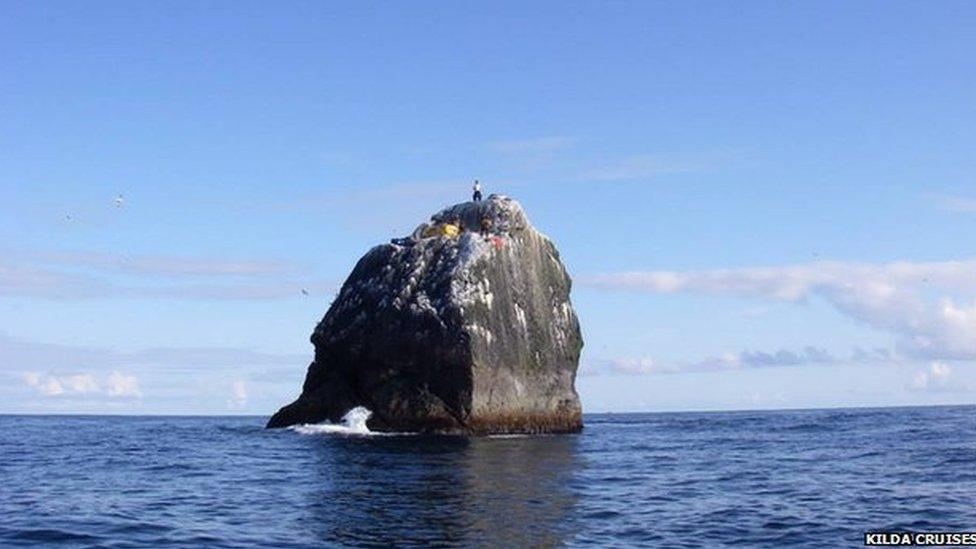
- Published8 October 2014
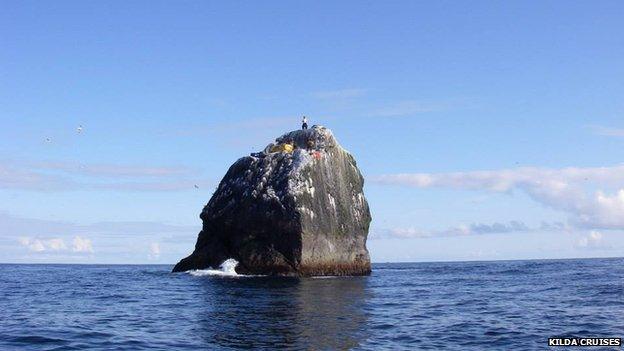
- Published6 June 2014
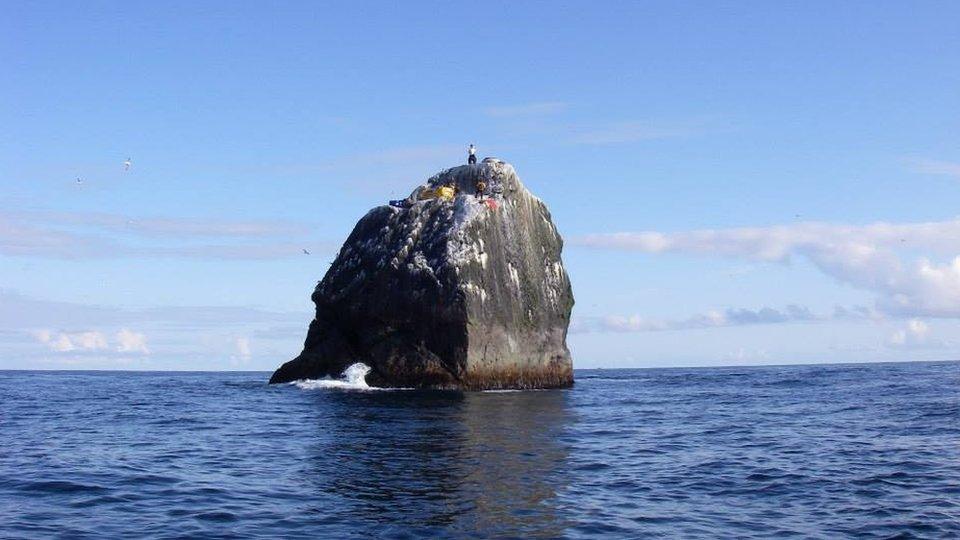
- Published16 July 2014
